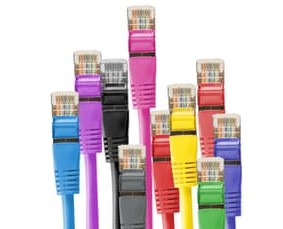
Shielded or Unshielded Cat6 cable?
 With high bandwidth applications and network systems venturing into factory environments, the need for shielded Cat 6 cable has increased. In these new areas of installation, the environment where the network cable is run has large amounts of EMI (Electro-Magnetic Interference). Although Cat 6 cables have improved cable twist to reject noise and handle gigabit Ethernet this by itself is not enough for high EMI environments. A shielded Cat 6 cable helps in high EMI installations. These high performance cables ensure the data within the cable will be protected from EMI, resulting in higher speeds and better data transmission.
With high bandwidth applications and network systems venturing into factory environments, the need for shielded Cat 6 cable has increased. In these new areas of installation, the environment where the network cable is run has large amounts of EMI (Electro-Magnetic Interference). Although Cat 6 cables have improved cable twist to reject noise and handle gigabit Ethernet this by itself is not enough for high EMI environments. A shielded Cat 6 cable helps in high EMI installations. These high performance cables ensure the data within the cable will be protected from EMI, resulting in higher speeds and better data transmission.
Grounding Necessities for Shielded Cat 6 cables
Shielding helps protect the data from electromagnetic interference from outside sources that could alter or weaken the signal traveling through the copper in the cable. The shields of the two connectors are electrically tied together by the drain wire. However, they will only become grounded if the jack they are placed in has its shielding tied to ground. If you are setting up a network with Category 6 shielded cables, you should use Cat 6 shielded couplers and jacks.
Installation caveats
Category 6 and 6a cable must be properly installed and terminated to meet specifications. The cable must not be kinked or bent too tightly (the bend radius should be at least four times the outer diameter of the cable). The wire pairs must not be untwisted and the outer jacket must not be stripped back more than 1/2 inch (1.27 cm).
All shielded cables must be grounded for safety and effectiveness and a continuous shield connection maintained from end to end. Ground loops develop when there is more than one ground connection and the difference in common mode voltage potential at these ground connections introduces noise into the cabling.


